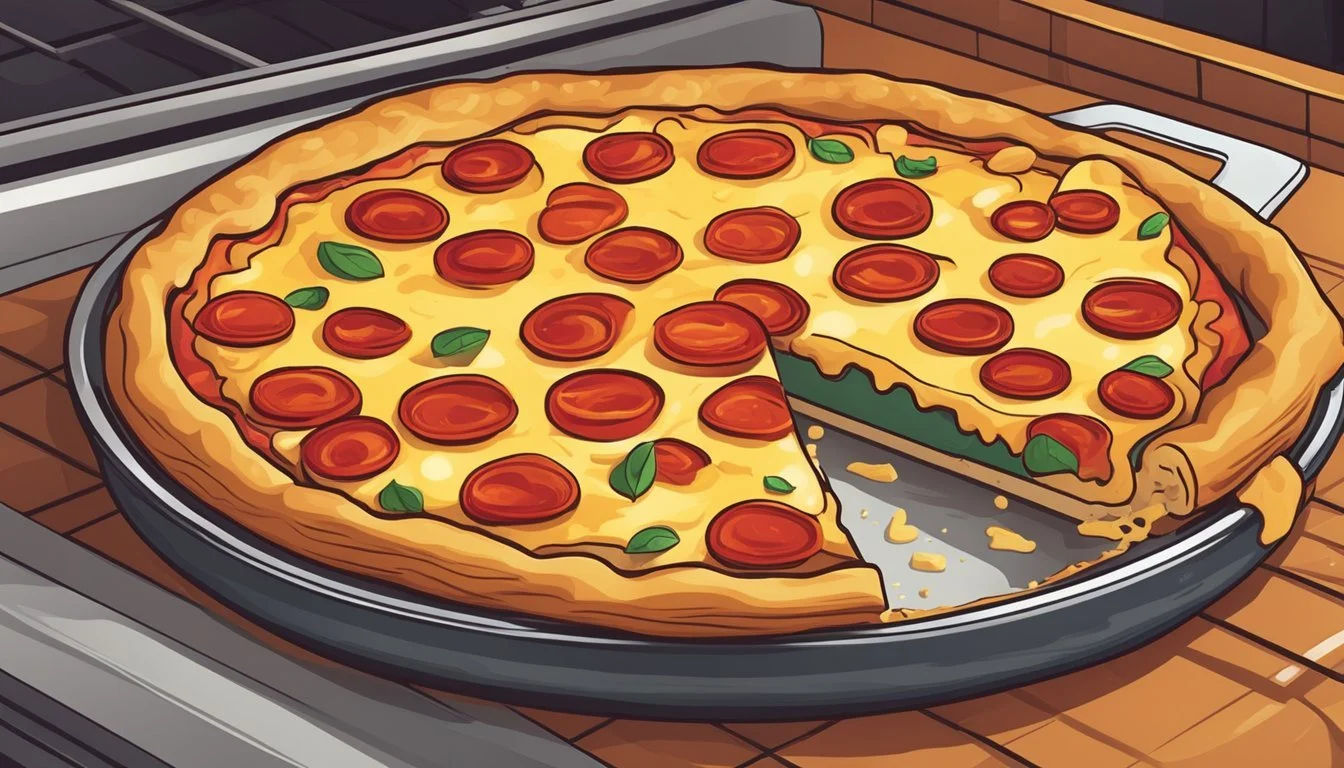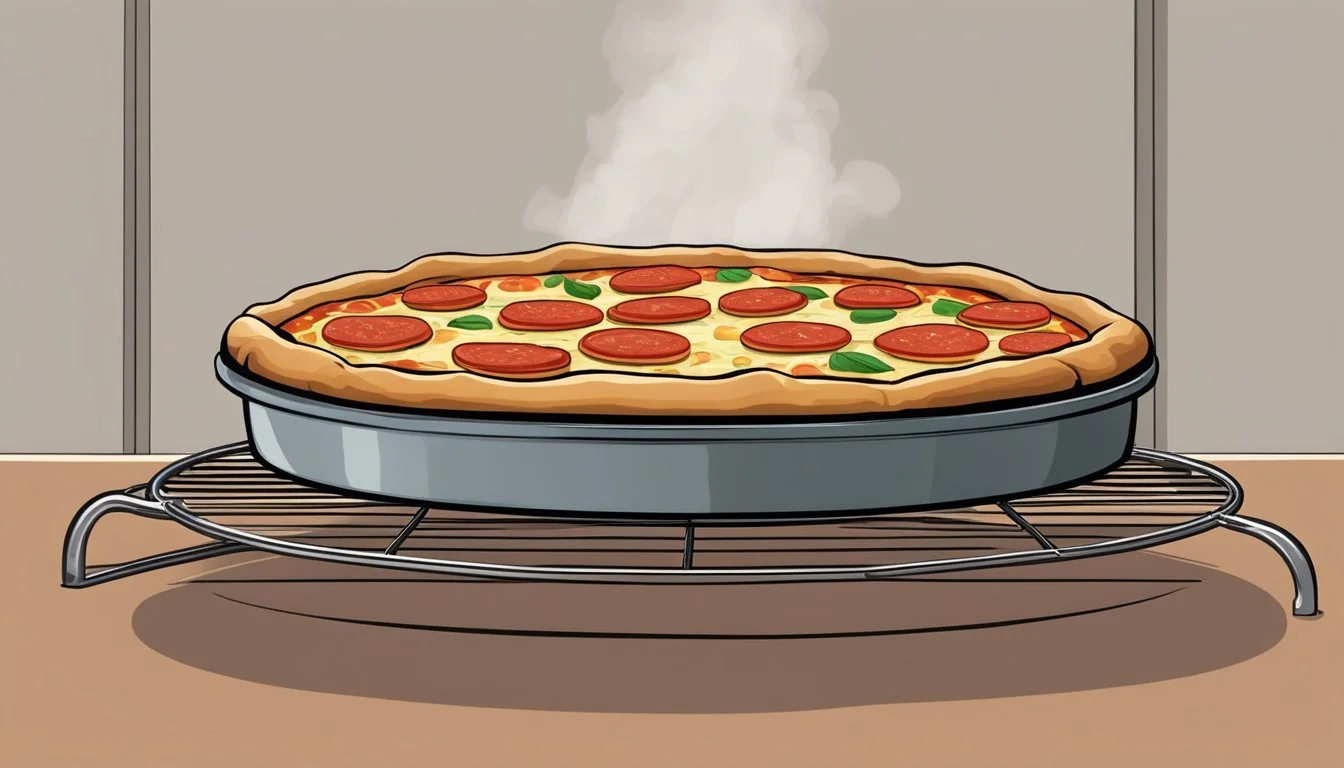How to Reheat Deep Dish Supreme Pizza
Best Techniques for Perfect Results
Reheating Deep Dish Supreme Pizza to perfection can make the difference between enjoying a fresh-tasting slice and biting into a soggy mess. Whether you're a fan of the rich flavors of sausage, peppers, and onions or simply want to savor the crunchy crust after a late-night snack, the methods to reheat it effectively are essential to know.
One of the best ways to reheat leftover pizza is by using an oven. Preheat the oven to 350 degrees Fahrenheit, place the slices on a parchment or foil-lined baking sheet, and bake until they are warmed through. This technique helps maintain the crispy texture of the crust without burning it, ensuring that every bite is as delicious as the first time.
Another reliable method is reheating the pizza in a skillet. Heat some oil in the skillet on medium heat, place the pizza crust side down, sprinkle a bit of water around the edge, and cover it with a lid. After 5-6 minutes, this approach will have your slice hot and ready, with the crust perfectly crisp and the toppings just right.
Understanding Deep Dish Pizza
Deep Dish Pizza, specifically the Chicago-Style variant, is a unique and indulgent trend in the world of pizza. This section explores its distinct composition and the proper methods for storing leftover slices.
Composition of Deep Dish Pizza
Deep Dish Pizza is notable for its thick, buttery crust, which serves as the perfect vessel for a multitude of toppings. The crust is typically higher and more substantial than that of regular pizza, providing a secure base for the dense layers above.
The layers often start with a hefty layer of Cheese directly on the crust. This is followed by a generous amount of toppings such as pepperoni, sausage, onions, and peppers. The Tomato Sauce is traditionally applied on top of the Cheese and other ingredients, a characteristic unique to Chicago-Style Deep Dish Pizza.
The final result is a pizza that is rich, dense, and packed with flavors, making it a favorite for pizza lovers who appreciate a hearty and filling meal.
Storing Leftover Pizza
Proper storage of leftover Deep Dish Pizza is crucial to maintaining its quality. If you plan to eat the leftovers within a few days, place the slices in an airtight container and store them in the Refrigerator.
To avoid freezer burn and preserve freshness longer, you can also Freeze individual slices. Wrap each slice tightly in plastic wrap, then aluminum foil, or use a vacuum-sealed bag before placing them in the freezer. Stored this way, the pizza can last for up to two months.
Ensuring the pizza is properly stored helps retain its flavor and texture when it’s time to reheat and enjoy another delicious bite.
Preparing for Reheating
To ensure your deep dish supreme pizza is reheated to perfection, it's important to handle it properly before you begin the reheating process. Maintaining quality and safety are key steps covered below.
Safely Bringing Pizza to Room Temperature
Before reheating, allow the pizza to come to room temperature. This prevents uneven heating.
Remove the pizza from the refrigerator and place it on your counter. Let it rest for about 30 minutes.
This helps reduce the temperature gap and allows for faster, more even reheating. It also lessens the chance of the crust becoming soggy.
Pre-Reheating Tips
Preheat your oven, air fryer, or skillet according to your preferred reheating method.
For the oven, preheat to 350°F. Line a baking sheet with aluminum foil and lightly spray it with cooking spray to prevent sticking.
If using an air fryer, set it to 325°F. Ensuring your equipment is preheated can make a big difference.
Lightly brushing the pizza crust with oil can also help maintain moisture and enhance flavor. Place the pizza slices on the prepared surface with space between them.
Taking these steps helps to preserve the texture and taste of your pizza when reheated.
Reheating Methods
Reheating deep dish supreme pizza can be done efficiently with several methods. Each method offers unique advantages to preserve the flavor and texture of the pizza. Read on for clear instructions tailored to your kitchen appliance.
Oven Method
To reheat deep dish supreme pizza in a conventional oven, preheat the oven to 350°F (175°C). Place the pizza slices on a baking sheet lined with parchment paper or aluminum foil. Lightly grease the foil with a bit of olive oil to prevent sticking.
Heat the pizza in the oven for about 10-15 minutes. Tip: For an extra crispy crust, briefly place the pizza under the broiler for the last 1-2 minutes. Use oven mitts to handle the hot baking sheet.
Skillet Method
Using a skillet is an excellent choice for achieving a crispy crust without drying out the toppings. Heat a nonstick or cast iron skillet over medium heat. Once hot, add a few drops of water to the skillet without touching the pizza.
Place the pizza slices in the skillet and cover with a lid. The steam from the water will rehydrate the pizza while maintaining the crust’s crispness. Heat for about 5-7 minutes or until the cheese is melted.
Toaster Oven Method
A toaster oven is a convenient option for reheating smaller portions. Preheat the toaster oven to 350°F (175°C). Place the pizza slices on the toaster oven tray or a piece of foil.
Heat the pizza for approximately 10 minutes. Check periodically to avoid burning. To get a crisper crust, turn the toaster oven to broil for the last 1-2 minutes. Use caution when removing the hot tray.
Microwave Method
For a quick, albeit less crispy option, use a microwave. Place the pizza slices on a microwave-safe plate. To prevent the crust from becoming too chewy, put a microwave-safe cup of water next to the plate.
Microwave the pizza at medium power for about 1-2 minutes. Try not to overheat, which can make the pizza tough. Let it cool for a minute before enjoying to prevent burns.
Air Fryer Method
An air fryer provides a balanced reheating approach with minimal effort. Preheat the air fryer to 325°F (163°C). Place the pizza slices in the air fryer basket, ensuring they do not overlap.
Heat the pizza for 6-7 minutes. Check for even heating and adjust the time if necessary, usually needing an additional minute for very thick slices. Carefully remove the hot pizza with tongs or a spatula.
Each of these reheating methods ensures that the pizza remains delicious, retaining its original flavors and textures. Adjust the time and temperature as needed based on the specifics of your appliance for the best results.
Preventing Sogginess
Reheating deep dish supreme pizza effectively requires methods that maintain a crispy crust and prevent moisture retention. The following sections provide targeted strategies for avoiding common pitfalls and ensuring a delectable, crispy pizza slice.
Avoiding Microwave Pitfalls
When microwaving pizza, it's easy to end up with a soggy crust due to uneven heating and trapped steam. One effective approach is to use a microwave-safe plate and place a cup of water next to the pizza slice. This helps balance the moisture level.
Another tip is to employ the microwave's reheat setting or use short bursts of time, about 30 seconds each, checking regularly to prevent overcooking. Alternatively, you can place a microwave-safe lid over the pizza, leaving a small gap to allow steam to escape.
Ensuring a Crispy Crust
For those who prefer an oven method, preheat the oven to 375°F and use a baking sheet. A critical step is to place the pizza either directly on the oven rack or on the baking sheet lined with parchment paper or foil. This setup allows heat circulation, preventing sogginess.
Setting the oven to a slightly higher temperature, around 400°F, for a shorter reheating duration, around 10-15 minutes, can also help crisp the crust. For an extra crispy bottom, consider using a pizza stone if available. Preheating the stone before placing the pizza on it can significantly improve crust texture.
Enhancing the Reheat Experience
Reheating deep-dish supreme pizza involves ensuring a gooey cheese melt and maintaining the rich flavors of the original dish. Techniques vary depending on preferred methods like oven or skillet.
Optimal Cheese Melt
For the oven method, preheat to 350°F (175°C). Place slices on a parchment-lined tray and cover loosely with foil to trap heat without drying the pizza. Heat for 15-20 minutes until the cheese becomes gooey.
Using a skillet, set the burner to medium heat. Add a small amount of oil to prevent sticking. Place the pizza in the skillet and cover with a lid. Heat for 5-7 minutes, allowing the cheese to melt evenly.
An air fryer can also work at 325°F (163°C) for quick reheating in 6-7 minutes.
Alternative Reheating Surfaces
When reheating deep-dish supreme pizza, various surfaces can deliver excellent results. Each method has its advantages, so picking the right one can enhance the flavor and texture of the leftovers.
Using a Griddle or Grill
Using a griddle or grill can provide a distinct flavor and crispiness. Start by preheating the griddle or grill to medium heat. Place the pizza slices on the griddle, being careful not to overcrowd them. Cover with a lid to trap heat and ensure even cooking.
To avoid sticking, a light coating of oil on the griddle surface is recommended. Cooking at around 200°F for 15-20 minutes ensures the pizza heats evenly without burning the crust. For grills, indirect heat works best. Place a tray under the grill grates to catch drips and prevent flare-ups.
Choosing the Right Cookware
Different cookware options can be used on the stovetop or in the oven to reheat deep-dish pizza. Cooking sheets are versatile, allowing you to heat multiple slices simultaneously. Line with parchment paper or lightly oil the sheet to prevent sticking.
For stovetop methods, nonstick or cast iron pans are excellent choices. Heat the pan over medium heat, adding a small amount of oil. Place the pizza slices in the pan, cover with a lid, and warm for about 10 minutes. This method heats the pizza through while keeping the crust crisp.
Choosing the proper cookware ensures the best texture and flavor, making leftovers taste just as good as the first slice.
Serving Reheated Pizza
To ensure your reheated deep dish supreme pizza is a delight to eat, it’s essential to consider both taste and texture.
Achieving the Best Taste and Texture
For the best texture, preheat the oven to 350°F. This lower temperature helps prevent the crust from burning while reheating evenly. Place the pizza on a parchment- or foil-lined baking sheet.
Cover the slices loosely with foil to protect the cheese from melting too quickly. This method mirrors the original baking process, delivering a crispy crust and evenly heated toppings.
If reheating multiple slices, give ample space on the baking sheet. Finish by baking until warmed through and enjoy a perfectly chewy crust and melted, bubbly cheese reminiscent of fresh, New York-style pizza.
Post-Reheating Considerations
After reheating your deep-dish supreme pizza, it's important to think about the next steps. Managing leftover pieces and maintaining quality can enhance your overall experience.
Dealing with Potential Waste
When reheating, ensure pieces that aren’t consumed right away are stored properly. Place any uneaten slices in an airtight container. Refrigerating promptly keeps the ingredients fresh and prevents spoilage.
If you notice any excessive grease, blotting it with a paper towel can improve the taste. Avoid throwing away edible parts by creatively using them in recipes. For instance, incorporate leftover pizza into pasta dishes or make a breakfast skillet.
Evaluating your portion sizes before reheating can also help reduce waste. Heat only the amount you plan to eat. This ensures minimal leftovers and better quality for each serving.





